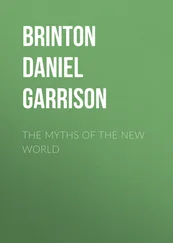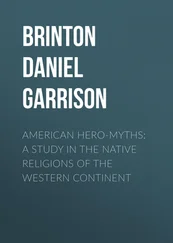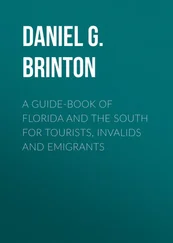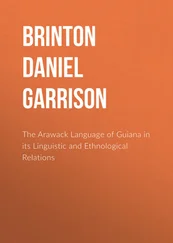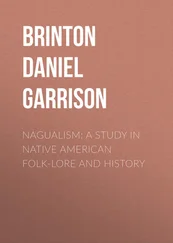Daniel Brinton - The Lenâpé and their Legends
Здесь есть возможность читать онлайн «Daniel Brinton - The Lenâpé and their Legends» — ознакомительный отрывок электронной книги совершенно бесплатно, а после прочтения отрывка купить полную версию. В некоторых случаях можно слушать аудио, скачать через торрент в формате fb2 и присутствует краткое содержание. Жанр: foreign_antique, foreign_prose, на английском языке. Описание произведения, (предисловие) а так же отзывы посетителей доступны на портале библиотеки ЛибКат.
- Название:The Lenâpé and their Legends
- Автор:
- Жанр:
- Год:неизвестен
- ISBN:нет данных
- Рейтинг книги:4 / 5. Голосов: 1
-
Избранное:Добавить в избранное
- Отзывы:
-
Ваша оценка:
- 80
- 1
- 2
- 3
- 4
- 5
The Lenâpé and their Legends: краткое содержание, описание и аннотация
Предлагаем к чтению аннотацию, описание, краткое содержание или предисловие (зависит от того, что написал сам автор книги «The Lenâpé and their Legends»). Если вы не нашли необходимую информацию о книге — напишите в комментариях, мы постараемся отыскать её.
The Lenâpé and their Legends — читать онлайн ознакомительный отрывок
Ниже представлен текст книги, разбитый по страницам. Система сохранения места последней прочитанной страницы, позволяет с удобством читать онлайн бесплатно книгу «The Lenâpé and their Legends», без необходимости каждый раз заново искать на чём Вы остановились. Поставьте закладку, и сможете в любой момент перейти на страницу, на которой закончили чтение.
Интервал:
Закладка:
Footnote_68_68
Heckewelder, in his unpublished MSS, asserts that both these names mean "Opossum". It is true that the name of this animal in Lenape is woapink , in the New Jersey dialect opiing , and in the Nanticoke of Smith oposon , but all these are derived from the root wab , which originally meant "white," and was applied to the East as the place of the dawn and the light. The reference is to the light gray, or whitish, color of the animal's hair. Compare the Cree, wapiskowes , cendré, il a le poil blafard Lacombe, Dictionnaire de la Langue des Cris s v
Footnote_69_69
On Indian Names , p. 375, in Trans American Philosophical Society , Vol. III, n. ser
Footnote_70_70
Proud, History of Pennsylvania , Vol. I, 144, II, p. 295. Heckewelder, Tran. Am. Philo. Soc. , Vol. IV, p. 376.
Footnote_71_71
Matthew G. Henry, Delaware Indian Dictionary , p. 709. (MS in the Library of the Am. Phil. Soc.)
Footnote_72_72
"The Monthees who we called Wemintheuw," etc. Journal of Hendrick Aupaumut, Mems. Hist. Soc. Pa. , Vol. II, p. 77.
Footnote_73_73
Heckewelder, ubi supra .
Footnote_74_74
New Jersey Archives , Vol. V, p. 22.
Footnote_75_75
The Rise and Progress of a Remarkable Work of Grace Among the Indians . By David Brainerd, in Works , p. 304.
Footnote_76_76
E de Schweimtz, Life of Zeisberger , p. 660, note.
Footnote_77_77
Travels into North America , Vol. II, pp. 93-94 (London, 1771).
Footnote_78_78
Lacombe, Dictionnaire de la Langue des Cris , p. 711. Dr. Trumbull, however, maintains that it is derived from sohkau-au , he prevails over (note to Roger Williams' Key , p. 162). If there is a genetic connection, the latter is the derivative. The word sakima is not known among the Minsi. In place of it they say K'htai , the great one, from kehtan , great. From this comes the corrupted forms tayach or tallach of the Nanticokes, and the tayac of the Pascatoways.
Footnote_79_79
Lewis H. Morgan, Ancient Society , p. 172.
Footnote_80_80
Loskiel, Geschichte der Mission , p. 168.
Footnote_81_81
For these particulars see Ettwein, Traditions and Language of the Indians , in Bulletin of the Pa. Hist. Soc. , Vol. I; Charles Beatty, Journal of a Tour, etc. , p. 51.
Footnote_82_82
C. Thompson, Inquiry into the Causes of the Alienation of the Delaware and Shawnee Indians , p. 16.
Footnote_83_83
I assign them the sweet potato on the excellent authority of Dr. C. Thompson, Essay on Indian Affairs , in Colls. of the Hist. Soc. of Penna. , Vol. I, p. 81.
Footnote_84_84
Peter Kalm, Travels in North America , Vol. II, p. 42.
Footnote_85_85
See Peter Kalm, Travels in North America , Vol. II, pp. 110-115; William Darlington, Flora Cestrica . (West Chester, Pa., 1837.)
Footnote_86_86
For these facts, see Bishop Ettwem's article on the Traditions and Languages of the Indians, Bulletin of the Pa. Hist. Soc. , 1848, p. 32. Van der Donck (1656) describes these palisaded strongholds, and Campanius (1642-48) gives a picture of one. See also E. de Schweimtz, Life of Zeisberger , p. 83. The Mohegan houses were sometimes 180 feet long, by about 20 feet wide, and occupied by numerous families. Van der Donck, Descrip. of the New Netherlands , pp. 196-7. Coll. N. Y. Hist. Soc. , Ser. II, Vol. I.
The native name of these wooden forts was menachk , derived from manachen , to cut wood (Cree, manikka , to cut with a hatchet). Roger Williams calls them aumansk , a form of the same word.
Footnote_87_87
See the communication on "Pottery on the Delaware," by him, in the Proceedings of the Am. Phil. Soc. , 1868. The whole subject of the archæology of the Delaware valley and New Jersey has been treated in the most satisfactory manner by the distinguished antiquary, Dr. Charles C. Abbott, in his work, Primitive Industry (Salem, Mass., 1881), and his Stone Age in New Jersey (1877).
Footnote_88_88
Four specimens are reported from Berks Co., Pa., by Prof. D. P. Brunner, in his volume, The Indians of Berks Co., Pa. , pp. 94, 95 (Reading, 1881). These were an axe, a chisel, a knife and a gouge. The metal was probably in part obtained in New Jersey, in part imported from the Lake Superior region. See further, Abbott, Primitive Industry , chap. xxviii. Peter Kalm, the Swedish naturalist, who visited New Jersey in 1748, says that when the copper mines "upon the second river between Elizabeth Town and New York" were discovered, old mining holes were found and tools which the Indians had made use of. Travels in North America , Vol. I, p. 384.
Footnote_89_89
Some antiquaries appear to have doubted whether the spear was in use as a weapon of war among the Pennsylvania Indians. (See Abbott, Primitive Industry , p. 248.) But the Susquehannocks are distinctly reported as employing as a weapon "a strong and light spear of locust wood." Relatio Itineris in Marylandiam , p. 85.
Footnote_90_90
For further information on this subject, an article may be consulted in the Transactions of the American Philosophical Society , 1st Ser., Vol. III, pp. 222, et seq., by Mr. Hugh Martin, entitled "An Account of the Principal Dies employed by the American Indians."
Footnote_91_91
The Delawares had three words for dog. One was allum , which recurs in many Algonkin dialects, and is derived by Mr. Trumbull from a root signifying "to lay hold of," or "to hold fast." The second was lennochum or lenchum , which means "the quadruped belonging to man;" lenno , man; chum , a four-footed beast. The third was moekaneu , a name derived from a general Algonkin root, in Cree, mokku , meaning "to tear in pieces," from which the Delaware word for bear, machque , has its origin, and also, significantly enough, the verb "to eat" in some dialects.
Footnote_92_92
History of West New Jersey , p. 3 (London, 1698).
Footnote_93_93
Bulletin Hist. Soc. of Penna. , 1848, p. 32.
Footnote_94_94
E. M. Ruttenber, History of the Indian Tribes of Hudson River , p. 96, note.
Footnote_95_95
Maximilian, Prince of Wied, Travels in America , p. 35.
Footnote_96_96
A Key into the Language of America , p. 105.
Footnote_97_97
Documentary History of New York , Vol. III, pp. 29, 32.
Footnote_98_98
Grammar of the Language of the Lenni Lenape , pp 108-109.
Footnote_99_99
They are given, with translations, in Zeisberger's Grammar , p. 109.
Читать дальшеИнтервал:
Закладка:
Похожие книги на «The Lenâpé and their Legends»
Представляем Вашему вниманию похожие книги на «The Lenâpé and their Legends» списком для выбора. Мы отобрали схожую по названию и смыслу литературу в надежде предоставить читателям больше вариантов отыскать новые, интересные, ещё непрочитанные произведения.
Обсуждение, отзывы о книге «The Lenâpé and their Legends» и просто собственные мнения читателей. Оставьте ваши комментарии, напишите, что Вы думаете о произведении, его смысле или главных героях. Укажите что конкретно понравилось, а что нет, и почему Вы так считаете.




